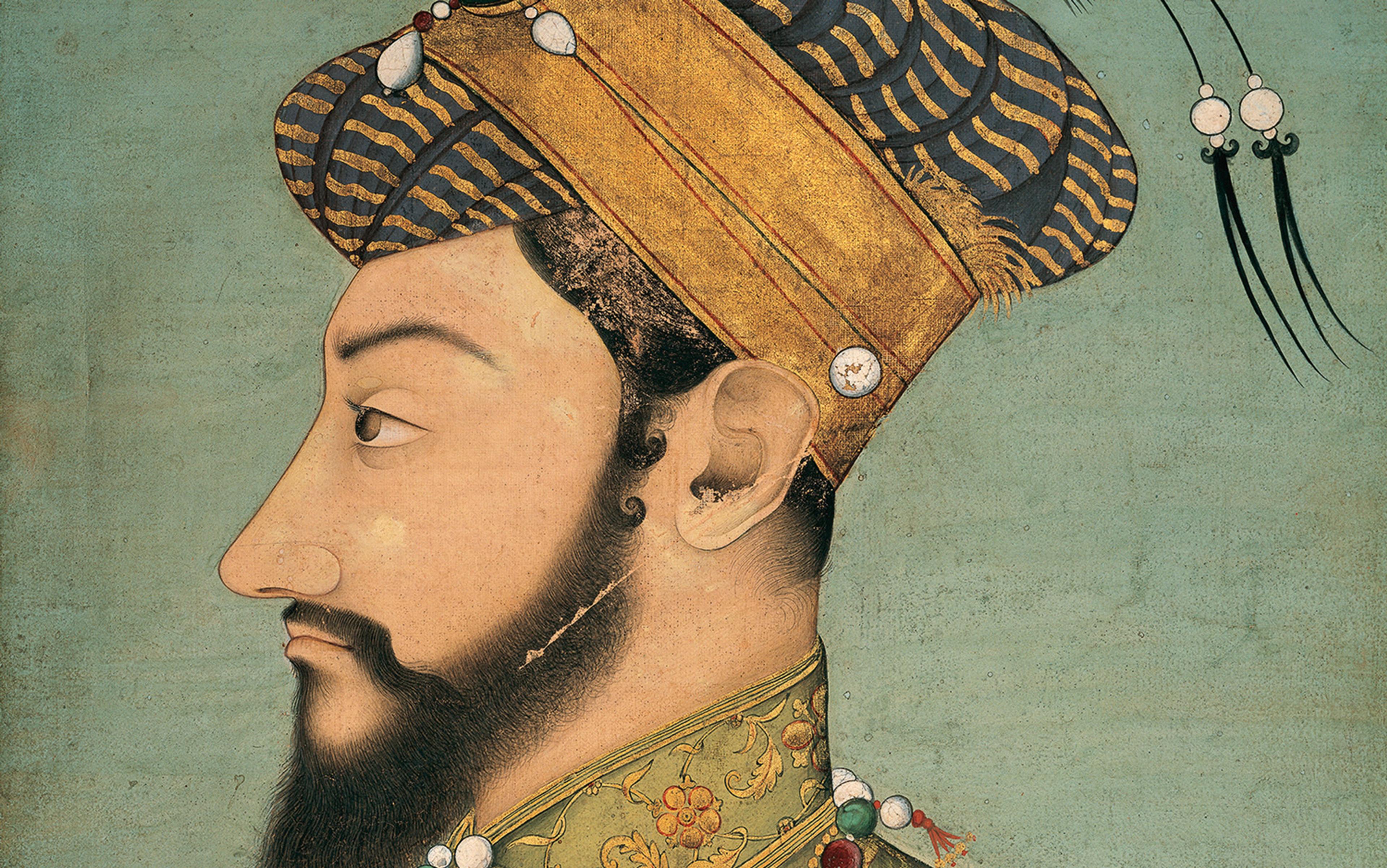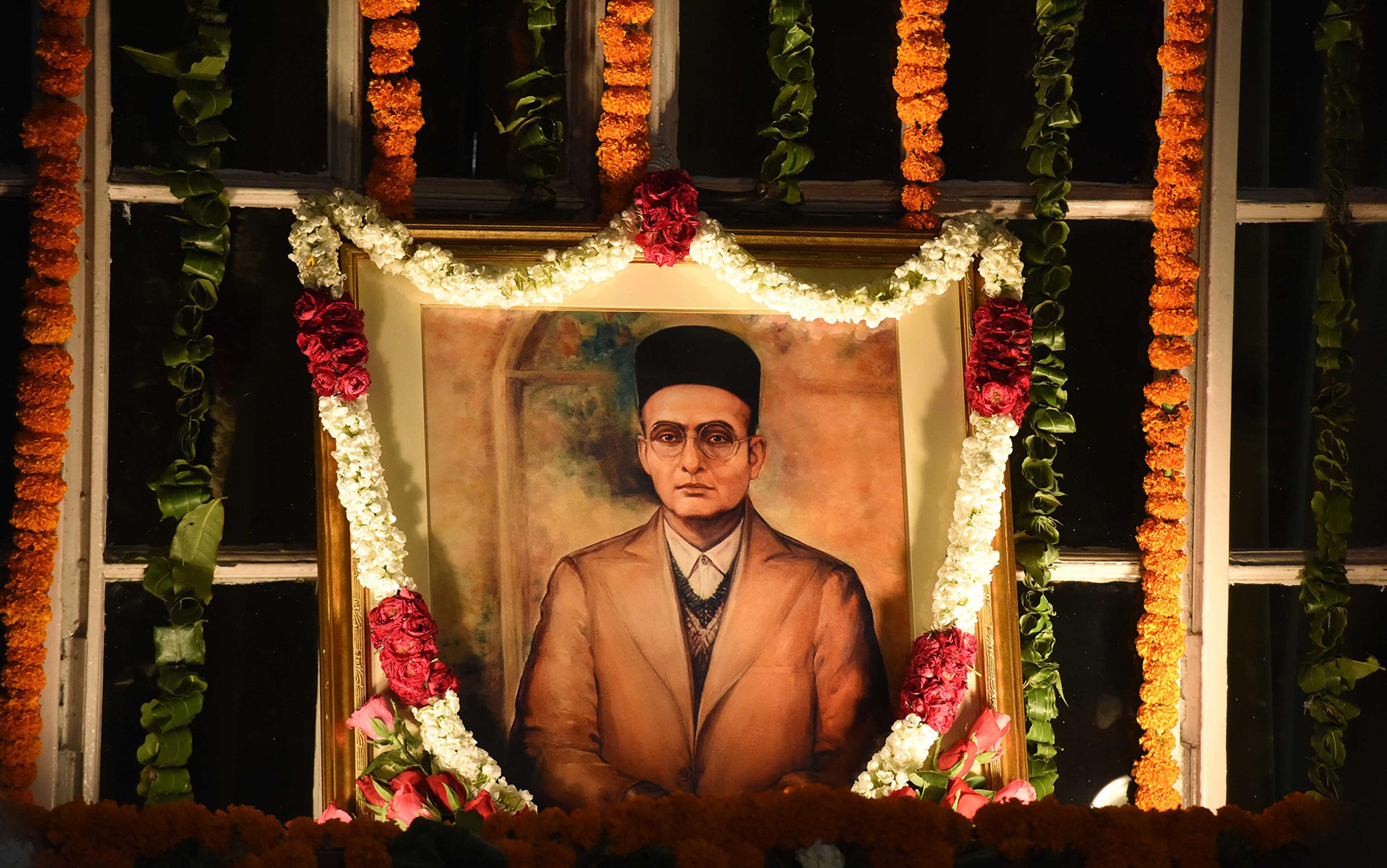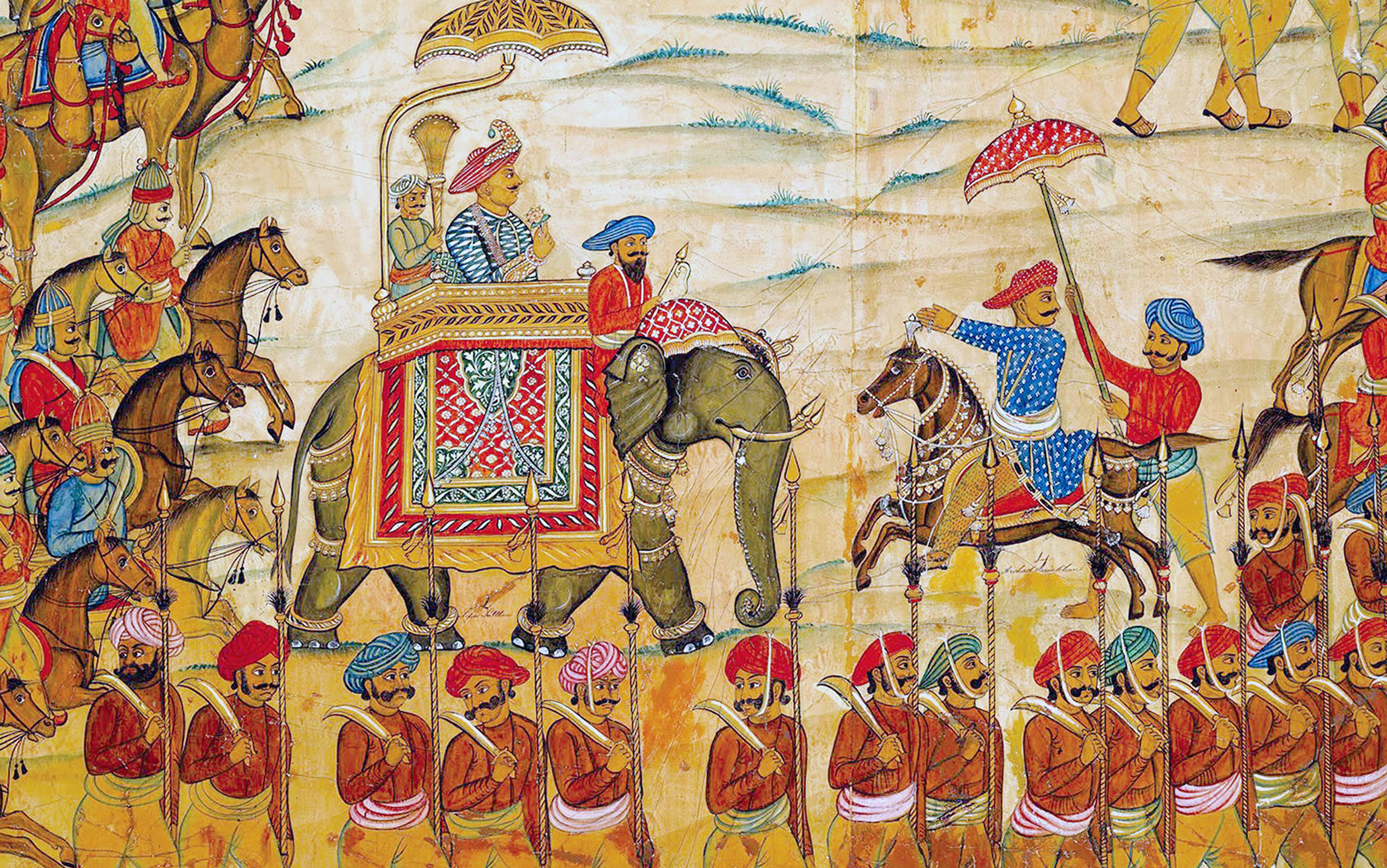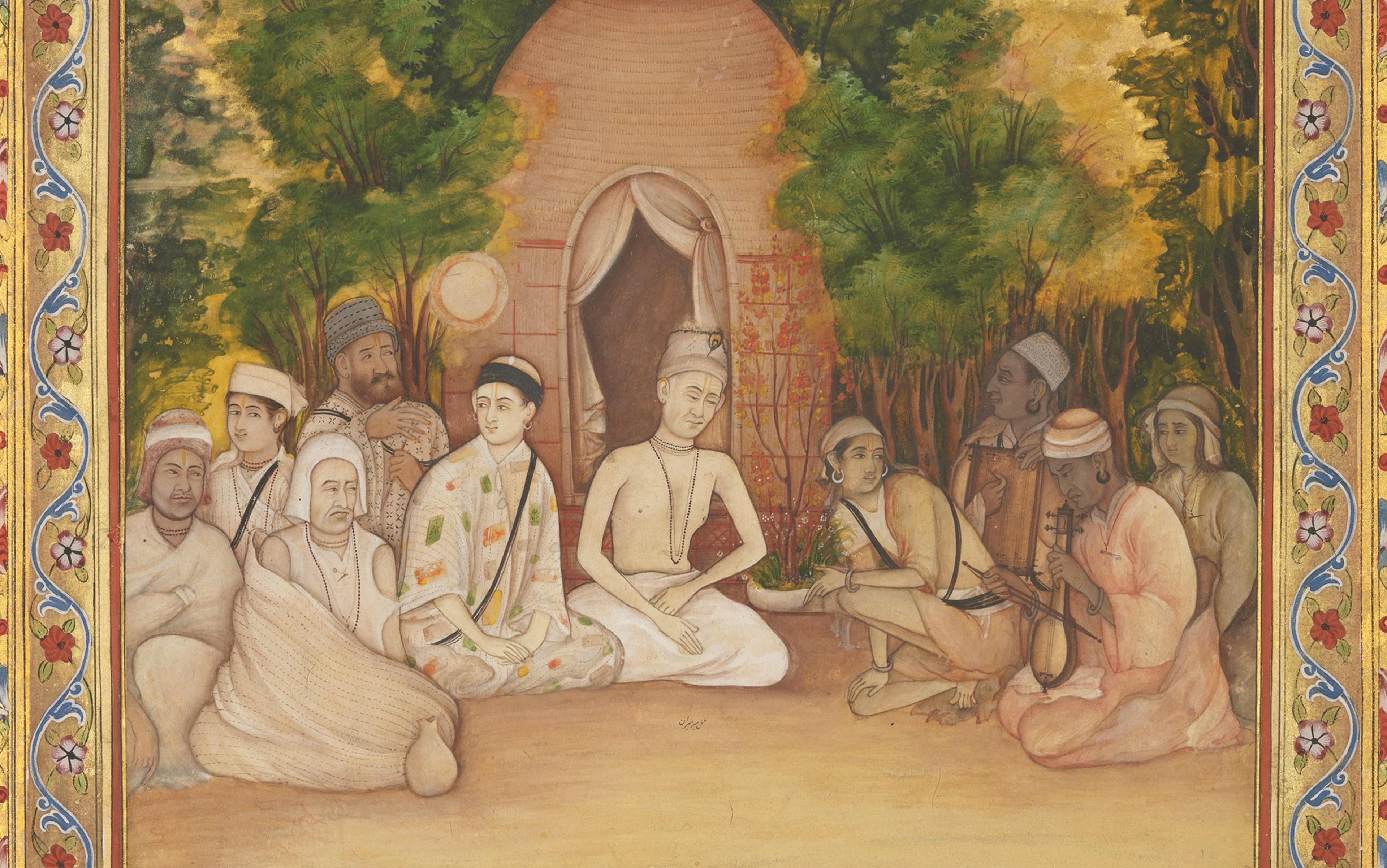Aurangzeb Alamgir, the sixth ruler of the Mughal Empire, is the most hated king in Indian history. He ruled for nearly 50 years, from 1658 until 1707, the last great imperial power in India before British colonialism. According to many, he destroyed India politically, socially and culturally.
Aurangzeb’s list of alleged crimes is long and grave. He is charged with fighting protracted, pointless wars in central and southern India and thereby fatally weakening the Mughal state. He is envisioned as a cruel despot who brutally murdered enemies, including his own brothers. He is regarded as a cultural dolt, uninterested in the extraordinary arts of south Asia, even hostile to them.
Above all, many modern Indians see Aurangzeb as a brutal oppressor of Hindus. He was a pious Muslim, and it is widely believed that he spent his long reign, nearly half a century, rampaging against Hindus and Hinduism. The popular story goes that Aurangzeb tried to convert all Hindus to Islam, and when that project failed he supposedly slaughtered millions of Hindus. People claim that Aurangzeb systematically destroyed Hindu cultural institutions, levelling thousands of Hindu temples. Some have even said that the reason why north India lacks the tall, elaborate temples that one finds in south India is because Aurangzeb smashed them all to pieces.
In 2015, a successful petition to rename Aurangzeb Road in Delhi summarised this despised ruler as ‘one of the most tyrannical tormentor perpetrator of Intolerant Inhuman Barbaric crimes in India [sic]’. However, these views of Aurangzeb owe more to myth than reality. Worse, the modern attacks on Aurangzeb are themselves rooted in dark motives.
Over the centuries, many groups have found Aurangzeb a convenient villain, for reasons more to do with their agendas than with Aurangzeb’s reign. The British, for example, disseminated great calumnies against him, as well as against other premodern Indian Muslim kings, because a barbaric Aurangzeb made British colonial rule look civilised by comparison. The British fostered their portrayal of Aurangzeb as a cartoonish bigot with misleading scholarly work, including selective and sometimes blatantly wrong translations of Mughal histories designed to highlight Aurangzeb’s alleged loathing for Hindus.
British colonialism ended in India 70 years ago, but their misrepresentations of the Mughals and other Indo-Muslim rulers have had a long and poisonous afterlife. In India, many still cite biased colonial-era British translations of Mughal texts as evidence of supposed Muslim wrongdoings. At least some of this reliance on questionable scholarship and translations is relatively innocent, but not all of it. Several notable groups in independent India have found maligning Aurangzeb to be useful for other, more sinister purposes, especially attempts to discredit modern Indian Muslims.
Today, Hindu nationalist groups lead the charge in creating a popular image of ‘Aurangzeb the bigot’. For Hindu nationalists, Muslims are a threat to India’s alleged identity as a fundamentally Hindu nation. Through most of the 20th century, Hindu nationalism was not a mainstream view. Especially after a Hindu nationalist assassinated Mahatma Gandhi, India’s beloved independence leader, in 1948, many Indians recoiled from the idea that India was or should be a Hindu nation. Instead, they embraced a view of India as a secular state, and a pluralistic one with equal room for followers of all religions. But, in the past decade, Hindu nationalism has surged in popularity, and in 2014, the Bharatiya Janata Party (BJP), a Hindu Right-wing political party, swept to power. More recently, in March of 2017, the BJP dominated legislative elections in Uttar Pradesh, India’s most populous state.
Despite its recent popularity, Hindu nationalism is an ideology with little, if any, grounding in Indian history. For most of its past, India was neither Hindu nor a nation, in the sense that Hindu nationalists typically use these terms. Mughal rule, a period in which a Muslim minority ruled over a Hindu majority in South Asia, embarrasses Hindu nationalists. If, as Hindu nationalists aver, India has long been a Hindu nation, why was it for a long time ruled by Muslims? Even more troubling to the claims of Hindu nationalism, why was Mughal India characterised by fruitful Hindu-Muslim relations in many areas, including state administration, literature, painting, music, and even religion and spirituality? Instead of admitting the complexity of the past, Hindu nationalists insist that religious oppression must have been the signature trait of Mughal rule. Aurangzeb’s reign in particular has become a focal point for this distortion.
Hatred of Aurangzeb extends far beyond the Hindu Right in modern India. In some cases, other groups have their own reasons for despising this premodern king. Many Sikhs, for example, remember a history of animosity between early Sikh religious leaders and the Mughals. More widely, via school textbooks and mass media, the colonial-era image of Aurangzeb the bigot has seeped deep into Indian society. Many Indians accept and repeat misinformed ideas about this king without realising the troublesome politics behind such views.
Since the BJP’s election win, assaults on the historical reputation of the Mughals have grown more fervent and absurd. In late summer 2015, after the idea received the endorsement of several BJP members of parliament, New Delhi officials agreed to rename Aurangzeb Road in Delhi. They literally wiped his name off the city’s road signs. In 2016, #RemoveMughalsFromBooks exploded on Twitter as part of a campaign that called for Indian textbooks to skim over or altogether remove Mughal history – a period spanning more than 300 years. This February, reports surfaced that the University of Rajasthan was considering rewriting its textbooks to brazenly reverse the outcome of a 1576 battle in which the Mughal emperor Akbar, Aurangzeb’s great-grandfather, vanquished a Hindu Rajput ruler. Historians who object to such activities, both in India and abroad, risk becoming the target of intense harassment campaigns.
Of the many scapegoats of Hindu nationalists, Aurangzeb is perhaps their favourite Indian Muslim to criticise. Though it is easy to make fun of some of the more outlandish mischaracterisations, the stakes involved remain quite serious. There is simply no way to understand the state of the subcontinent on the eve of British colonialism without a reasonable, historically grounded perspective on Aurangzeb, who was almost certainly the most important political figure in 17th-century India.
Numerically and geographically, his empire was vast. At the height of his power, Aurangzeb ruled over 150 million people, more than the entire population of Europe at the time. Including the emperor’s sizeable conquests, the Mughal kingdom stretched across 3.2 million square kilometres, including parts of what are now India, Pakistan, Afghanistan and Bangladesh. The imperial treasury boasted lavish collections of gems, diamonds and gold that likely made Aurangzeb the richest man of his day. In the eyes of most people in 17th-century Asia and Europe, Aurangzeb Alamgir truly lived up to his names: the throne-adorner (Aurang-zeb) and the world-seizer (Alam-gir).
Historians of the day struggled to convey the carnage, describing battlegrounds drenched in so much blood they glimmered like fields of red tulips
Aurangzeb was the third of four sons of Shah Jahan, the fifth Mughal emperor, but he had an equal claim to the throne as his brothers. The Mughals did not recognise primogeniture, the succession rights of the eldest son. Instead, sons fought one another for their father’s crown according to the harsh Persian saying: ya takht ya tabut, either the throne or the grave. Indeed, Aurangzeb indisputably held the Mughal crown only when all three of his brothers were dead or exiled from India.
Although there had been many succession disputes in Mughal history, the struggle between Shah Jahan’s four sons was perhaps the bloodiest. Shah Jahan fell suddenly ill and, while he stood at death’s door, his sons rushed to mobilise their supporters. Over a period of two years, from 1657 until 1659, the brothers battled with one another in numerous violent clashes that resulted in death tolls in the tens of thousands. Historians of the day struggled to convey the carnage. They often resorted to poetic descriptions, such as describing battlegrounds that were drenched in so much blood they glimmered like fields of red tulips. In the end, Aurangzeb captured and executed two of his three brothers. The third escaped to Burma, where a few years later a local leader murdered him.
In more recent times, Aurangzeb’s severe treatment of his brothers has earned him rebuke. But, in Mughal India, the succession struggle surprised few. True, some European observers were horrified, and decried this family conflict as ‘inhumane’, ‘an unnatural war’ with ‘barbarous sacrifices’. Indians, however, were less alarmed, having been conditioned by prior Mughal successions. Recent scholarship has highlighted how princely fighting for the throne strengthened the Mughal state, by allowing the most capable son to rise to power and incentivising princes to recruit new groups into Mughal service in their competition to be the next emperor.
Thus, Aurangzeb ascended to the helm of a strong empire, armed with the leadership, and the administrative and battle experience and skills, that would make him an effective king.
Aurangzeb’s half-century on the Mughal throne is best understood through the pursuit and cultivation of a set of core cultural values: power, justice, piety and Mughal kingship. Of all these, justice strikes many as a surprising way to think about a king so much defamed today. It is true that Aurangzeb’s justice, like the world in which he lived, was harsh. It featured, for example, capital punishment for state enemies, sometimes preceded by torture. Rather than judging these acts by contemporary standards, however, a better way to understand him and 17th-century India is to grasp what he thought it meant to be a just, Muslim, Mughal king.
Above all else, Aurangzeb wanted to enlarge Mughal domains, and his expansion aims limited his other goals, especially his pursuit of justice. Often, we can glimpse some of the key tensions of his reign by identifying points of conflict between his unbridled imperial ambitions and his professed commitment to piety, just rule and Mughal kingship.
For example, immediately upon taking the Mughal throne, Aurangzeb found himself in violation of Islamic law and condemned by Muslim rulers across Asia. Quite inconveniently, his father did not die from his severe illness in 1657 as expected. Instead, Shah Jahan made a full recovery within a few months. But by then, the power struggle among his sons could not be stopped: Aurangzeb had already seized the imperial treasury and had begun pursuing his brothers. One could kill one’s princely brothers in Mughal India – but not one’s father, which was considered heinous. So, Aurangzeb imprisoned his father in the Red Fort in Agra, some sources say with a tormenting view of the Taj Mahal, which Shah Jahan had built as a glorious tomb for his favourite wife. Shah Jahan remained under house arrest until his death seven and a half years later, in 1666.
In the eyes of many fellow rulers across the Islamic world, the act of usurping his father branded Aurangzeb an illegitimate king. The Safavid king of Persia taunted that Aurangzeb had proclaimed his seizure of the world (alam-giri) with his regnal title of Alamgir when he had merely seized his father (pidar-giri). For as long as Shah Jahan lived, the Sharif of Mecca refused to recognise Aurangzeb as a legitimate Muslim. Aurangzeb’s usurpation of his father was, according to Islamic ideas of the time, unjust.
Mughal India of the 17th century was a different time, and Aurangzeb’s Islam cannot be shunted into today’s notions of liberal versus conservative
Like many people, Aurangzeb grew more pious as he got older. It is possible that the experience of being judged, by other Muslims, as an illegitimate Muslim king while his father lived compelled certain changes in his religious life. For example, only after ascending the Mughal throne at the age of 39 did Aurangzeb find time to memorise the Quran. He copied it by hand in his spare time and, in later years, sewed prayer caps.
But Aurangzeb was no Islamic hardliner. Throughout his rule, he maintained ties with Sufi communities known for their exuberant mystical practice of Islam, and he was even buried at a Sufi shrine. Because he found large-scale public festivals distasteful and dangerous, Aurangzeb restricted the Muslim celebrations of Eid al-Fitr and Eid al-Adha. He also banned some theologically controversial writings, such as certain works by Ahmad Sirhindi, a noted Muslim polemicist. Mughal India of the 17th century was a different time, and Aurangzeb’s Islam cannot be shunted into today’s notions of liberal versus conservative.
At stages in his later life, too, Aurangzeb’s imperial ambitions took precedence over his piety. For instance, between 1685 and 1686, he besieged Bijapur, a Muslim state in central India. The siege caused widespread starvation, which prompted a group of Bijapuri theologians to beg Aurangzeb for mercy. They argued that fighting against fellow Muslims contravened Islamic law, but their pleas fell on deaf ears. Hungering for more land, Aurangzeb continued the harsh siege until Bijapur fell.
Aurangzeb’s vision of justice required that he extend safety and security to all within his empire. Often, this resulted in obsessions with routine matters of governance, especially involving crime. For instance, Aurangzeb wrote repeatedly in letters about the safety of roads. He once demoted his son Azam Shah for not effectively dealing with highway robbery.
Aurangzeb struck hard against enemies who threatened the integrity or peace of the Mughal state, no matter their status or religion. When another son, Prince Akbar, revolted, Aurangzeb drove him out of India, where the prince remained until his death decades later. Aurangzeb relentlessly pursued Shivaji, a Maratha chief sometimes called the ‘mountain rat’ in Mughal sources for his opposition to Mughal rule in the hills of central India. After Shivaji escaped from Aurangzeb’s court in the mid-1660s, the Mughal king never captured the Maratha again. But when Aurangzeb got his hands on Shivaji’s son, Sambhaji, he literally ripped Sambhaji apart in punishment for continuing his father’s fight against the Mughals.
Over his nearly 50-year rule, Aurangzeb probably destroyed a total of a few dozen Hindu temples
Aurangzeb’s most controversial state killing is his execution of Tegh Bahadur, the ninth Sikh guru, in 1675. In the mid- to late-17th century, Tegh Bahadur caused unrest in Mughal-controlled Punjab, thereby posing a threat to state security and Aurangzeb’s authority. Contemporary Mughal sources do not even mention his execution, probably because, from a state perspective, it was unexceptional. Many moderns perceive this episode as a case where an Islamist king sought to stamp out Sikhism in its early days. A commonly repeated story is that Aurangzeb asked Tegh Bahadur to convert to Islam and then executed him when the Sikh guru stood firm in his faith. Given Aurangzeb’s typically harsh actions against state enemies, I find it unlikely that conversion, even if offered, would have saved Tegh Bahadur.
It was Aurangzeb’s preoccupation with state security that led to his policies toward Hindu temples, an issue that looms large in the public’s imagination in India today. Contrary to the contemporary view of Aurangzeb as a temple destroyer, thousands of Hindu temples adorned the landscape of Aurangzeb’s India, and the vast majority were still standing at the end of his rule. Plentiful evidence attests that Aurangzeb issued orders protecting Hindu and Jain temples, and granted temple associates land and other favours. Aurangzeb even chastised Muslims who troubled pious Brahmins.
What the Mughal state protected, however, it could also take away. At times, Aurangzeb destroyed select temples, especially when their associates supported insurgents or otherwise undermined Mughal state interests. In total, over his nearly 50-year rule, Aurangzeb probably destroyed a few dozen Hindu temples. At the time, people did not draw a firm line between religion and politics, and it was normal to treat temples as legitimate targets of punitive state action. Indeed, Hindu kings had begun the Indian tradition of desecrating one another’s temples by the seventh century, long before the dawn of Indo-Muslim rule. Today, however, the thought of temple-destruction enrages many people. Accordingly, this aspect of Aurangzeb’s rule, rather unexceptional by the standards of the day, is currently one of the most controversial features of his reign.
Aurangzeb bore the burden of upholding the ideal of Mughal kingship. He wrote in letters about his Mughal ancestors, seeing his kingdom as a precious gift from his forebears. In many respects, Aurangzeb’s court protocol followed those of his predecessors. When in Delhi, Aurangzeb sat on the Peacock Throne, a symbol of Mughal kingship that dazzled onlookers with its many gems. Mughal court rituals were highly formal, and Aurangzeb wore splendid silks and jewels while nobles stood awestruck, arrayed by rank in the Mughal hierarchy.
Mughal kingship involved a great deal of latitude, and Aurangzeb availed himself of the opportunity to shape Mughal court culture to reflect his own aesthetic and religious tastes. For example, like his forefathers, Aurangzeb devoted state financial resources to patronage. But whereas his great-grandfather was known for translating Hindu Sanskrit texts into Persian, his grandfather for his painting studio, and his father for building the Taj Mahal, Aurangzeb sponsored the Fatawa-i Alamgiri, a collection of Hanafi law codes.
Aurangzeb upheld the Mughal tradition of including Hindus in the nobility. For a century, Hindus had constituted roughly 20 per cent of all Mughal nobles. In the second half of his reign, Aurangzeb enlarged by 50 per cent the proportion of Hindus in the Mughal nobility, hardly a course of action that indicated he was bent on destroying Hindus or Hinduism. This rise in the number of Hindu nobles did not prevent anti-Hindu policies from being enacted, such as the jizya tax on most non-Muslims that Aurangzeb began levying in 1679, and a recall of endowed lands given to Hindus in 1672. We lack records of state revenues from the jizya, but some evidence suggests that most of the money ended up in the pockets of greedy tax-collectors rather than in the Mughal treasury. We have better records concerning the recall of endowed lands, and the order was unenforced in many provinces of the empire. In Bengal, for instance, the Mughals actually accelerated their grants of endowed lands to Hindus after 1672.
Aurangzeb’s thirst for conquest grew as he aged. The emperor spent his 60s, 70s and 80s living out of tents while he fought for Mughal conquests in central and south India. At first, his victories were swift. In the 1680s, he took both Bijapur and Golconda, along with Golconda’s famed diamond mines. But thereafter Mughal victories lagged. The 1690s and the first seven years of the 1700s saw protracted sieges and weak morale among Mughal soldiers. Even as an old man, when age required that he be carried around the Deccan and south India on a palanquin, Aurangzeb often personally oversaw military activities.
Often, the true purpose of ahistorically condemning Aurangzeb is to galvanise anti-Muslim sentiments
Aurangzeb seemed to lose himself, and perhaps the Mughal empire too, in southern India. At Aurangzeb’s death in 1707, the Mughal empire was the largest kingdom in Indian history. Things went poorly thereafter, however. Between 1707 and 1709, Aurangzeb’s sons fought for the throne, as was expected, but the victor, Bahadur Shah, was unable to solidify control over what had become an unwieldly empire. Enemies of the Mughals grew stronger, and the state began to break apart.
Among scholars, Aurangzeb’s potential role in weakening the Mughal state remains a matter of vigorous debate. This debate thrives, in part, on the stunning contrasts that characterise his reign. Aurangzeb grew the Mughal empire to its greatest extent, adding four new provinces that collectively constituted more than one-quarter of the Mughal kingdom. Yet he might have overextended imperial resources, positioning the Mughal empire to collapse after his death. He was the richest king of his day, boasting items such as the Timur ruby and the Koh-i-noor diamond. Yet Aurangzeb preferred a simpler life, reciting the Quran and knitting prayer caps by hand. He was widely feared and respected, and yet his letters from later life suggest a man plagued by his own shortcomings and fear for his empire’s future.
Aurangzeb is a critical figure to understanding India’s past. However, many in modern India are uninterested in recovering the historical Aurangzeb, preferring instead to slander a distorted memory of the king. This approach to history as a blank slate that can reflect our modern ideas – even to the extreme of entirely rewriting the past – is dangerous. Often, the true purpose of ahistorically condemning Aurangzeb is to galvanise anti-Muslim sentiments.
We must embrace the project of understanding Aurangzeb on his own terms in order to gain a more accurate perspective on this influential emperor and the world he helped to create. Studying Aurangzeb also helps to challenge modern ignorance and hate by presenting us with a complicated man that we cannot explain by simple reference to modern categories and biases. Knowing more about Aurangzeb is important, both for India’s past – and India’s present.






